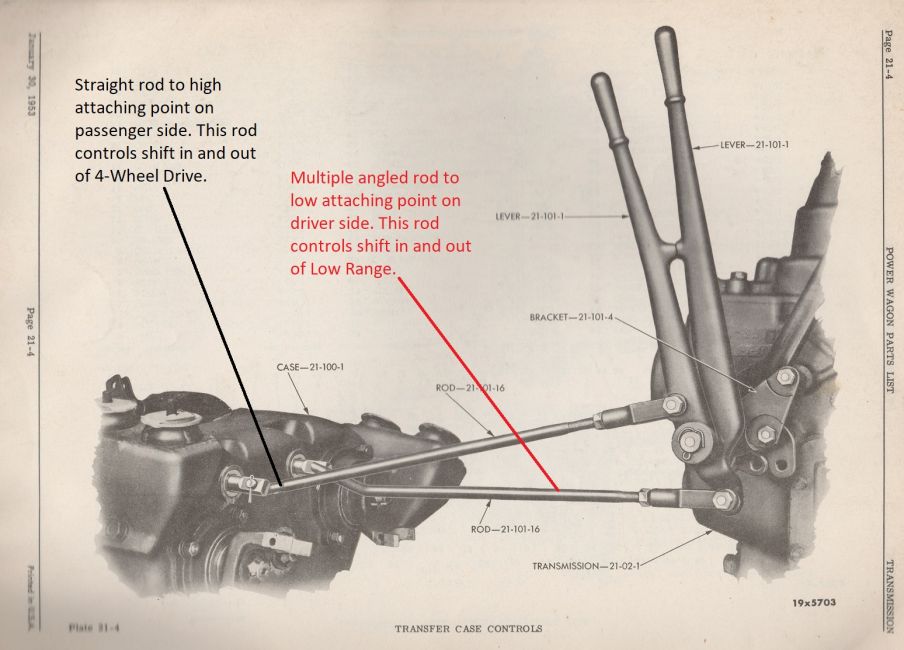
Posted by Clint Dixon [108.162.216.219] on Sunday, June 19, 2022 at 19:21:55 :

This subject comes up quite often. Any WDX-WM300 model civilian Power-Wagon manufactured between 1946 and 1968 should easily be able to attain 45 to 50 mph on the highway as long as they have the correct tire sizes and differential ratios as supplied from the factory as a matched set. This is considering that trucks with 4:89 differential ratios were normally supplied with 97.50x16 tires and those with 5.83 differential rations were normally supplied with 9.00x16 tires.
Nevertheless, some Power-Wagons were special ordered with 4:89 differential ratios and 9.00x16 tires. These were not the norm, but when found will allow speeds as high as 55 mph, if not greater. Even fewer Power-Wagons left the factory with 5:83 differential ratios and 7.00x16 tires. These were far from the norm and will allow for road speeds probably only around a max of 40 mph. So for the remainder of this topic will focus on the normally found 4.89/7.50 and 5:83/9.00 combinations.
If a truck cannot maintain a road speed of 45 to 55 mph, with no load and on a flat road, with a reasonably healthy engine, (with the above mentioned gearing ad tires) then something is amiss. The first thing I would check is that the control rods from the levers in the cab to the shift rails in the transfer case are connected correctly as shown in the attached image taken from a period MoPar Parts List. It takes some ingenuity, but they can be hooked up backwards with the wrong lever controlling the wrong shift rail. When the truck is in 2-wheel drive, both levers should be at their furthest travel forward towards the firewall. They should be almost touching each other. Low Range cannot be chosen while both levers are in the forward position.
When the rear lever is moved to its rearmost position (with the forward lever left in its forward most position), the front driveshaft and axle are engaged for 4-wheel drive. Low Range cannot be chosen until the forward lever is also moved to its rearmost position where it will almost be touching the rear lever.
If all parts are assembled correctly, but the truck cannot be driven in 2-wheel drive (High Range) with both levers in their forward most positions, it MAY be possible that there is an internal problem with the Transfer Case. I have not confirmed if it is possible or not but the Transfer Case MAY have been assembled backwards (mirrored image passenger side to driver side) and their are now bigger problems where certain conditions can no longer be selected at all. Not likely though.
A third possibility is that the problem of not being able to attain 45 to 55 mph road speed may not be Transfer Case related at all. If the truck still has an integral governor at the base of a "square top" Carter CARbureTER, or the later sandwinch governor under a "non square top" Carter CARbureTER, one or more of the internal components to either governor may have worn our or broken entirely. This can severely limit the road speed of the truck.
The image attached here can also be found on t137.com. Here is the description that also accompanies the image found there:
This is a fairly clear image of how the transfer case shift levers, rods, and shift rails in the Transfer Case all attached together on a WDX thru WM300 model 1-ton civilian Power-Wagon manufactured from 1946 thru 1968. Note that both levers are shown in the rearmost position - indicating that this Transfer Case is shown shifted into the correct positions allowing the front driveshaft (and axle) to be engaged and for the gear selection to be in the "Low Range" position.
Junior
Follow Ups: